Last-Minute NYC Holiday Gift Guide 🎁
We’ve created a holiday gift guide with presents for the intrepid New Yorker that should arrive just in time—


On Thursday February 13, the New York Transit Museum opened up its new exhibit, Streetscapes & Subways: Photographs By Pierre P. And Granville W. Pullis. The exhibit features photographs from the turn of the 20th century that document the New York City subway’s construction and expansion into to the Bronx and Queens. Taken together, the images provide a rare view of the last days of “old New York.”

Lexington Avenue, between 105th and 106th Streets, Manhattan, 1913. Photograph by Pierre P. Pullis. Lundin Collection. Courtesy of the New York Transit Museum.
The exhibit features photographs of subway construction across the city from as early as 1900. The photographs were taken throughout the city by Pierre Pullis and Granville Pullis, who, according to the New York Times, were assigned to record the progress of construction of New York’s subway system. They used cameras with 8-by-10 inch glass negatives to document every odd building and cracked brick. Glass negatives were typically cleaned and reused for more photographs, yet many of these negatives from the early 1900s still remain.
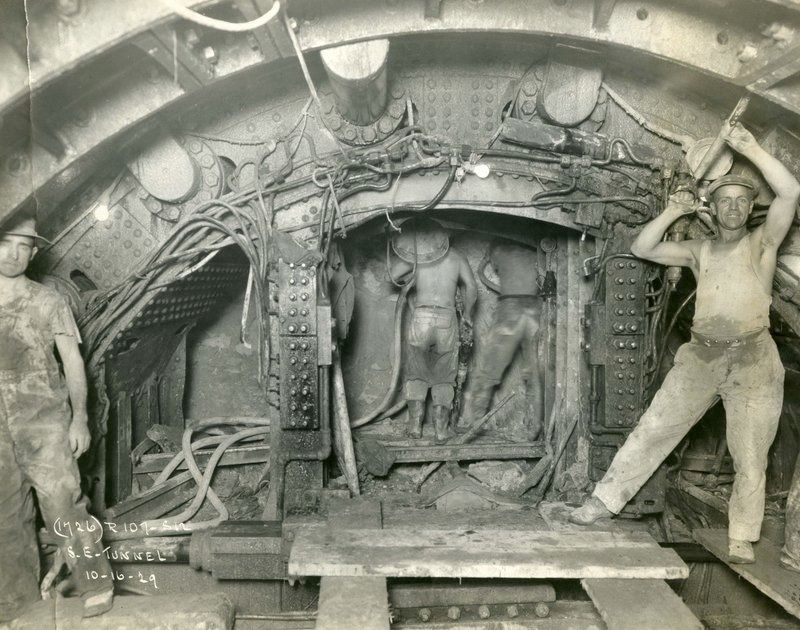 Workers in the Greenpoint tunnel. Photograph by Pierre P. Pullis. Eugene Casey Tunneling Collection. Courtesy of the New York Transit Museum.
Workers in the Greenpoint tunnel. Photograph by Pierre P. Pullis. Eugene Casey Tunneling Collection. Courtesy of the New York Transit Museum.
According to the New York Transit Museum, “The photographs transcend their original purpose, showing New York changing on a daily basis as a result of the subway and revealing architectural and cultural details of a city that would otherwise be long forgotten.” One photograph from 1900 depicts two workers staring at the camera at 4th Avenue and 10th Street below horse and buggies striding on the road above.
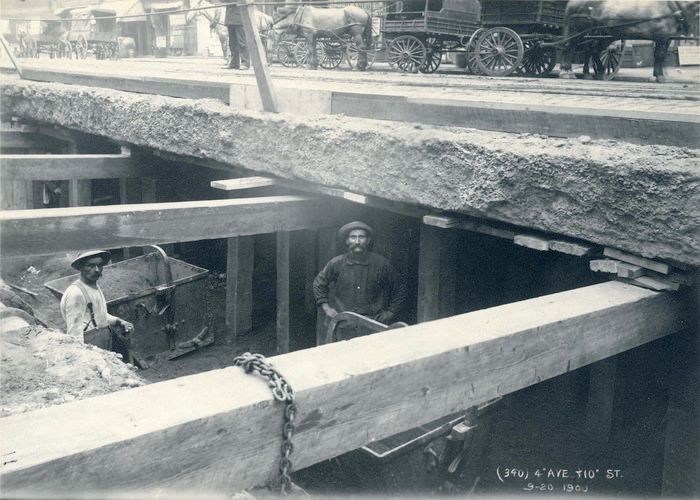
4th Avenue & 10th Street, Manhattan, 1900. Photograph by Pierre P. Pullis. Subway Construction Photograph Collection. Courtesy of the New York Transit Museum
A blue-tinted photograph from 1907 shows four workers in the midst of construction of the East River Tunnel, while another blue-tinted photograph from 1911 depicts a construction shaft near Brooklyn’s 36th Street station.
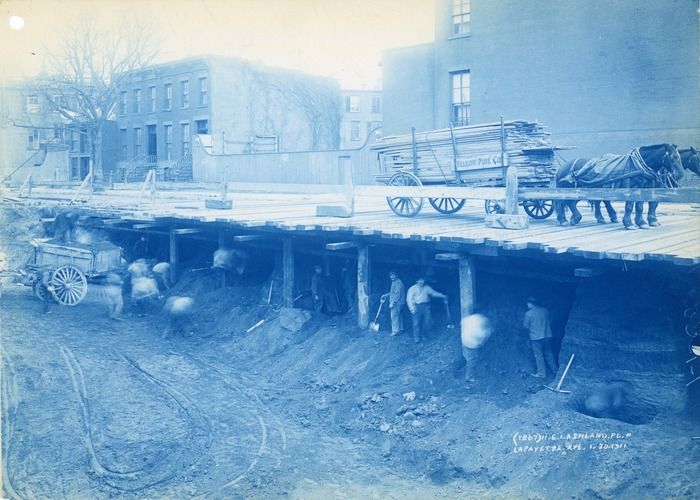
Ashland Place & Lafayette Avenue, Brooklyn, 1911. Photograph by Granville W. Pullis. Subway Construction Photograph Collection. Courtesy of the New York Transit Museum
More dynamic photos from the 1910s and 1920s reveal subway construction amidst tall buildings and people commuting to work. Another photograph even shows an excavated boat found during construction in Manhattan.
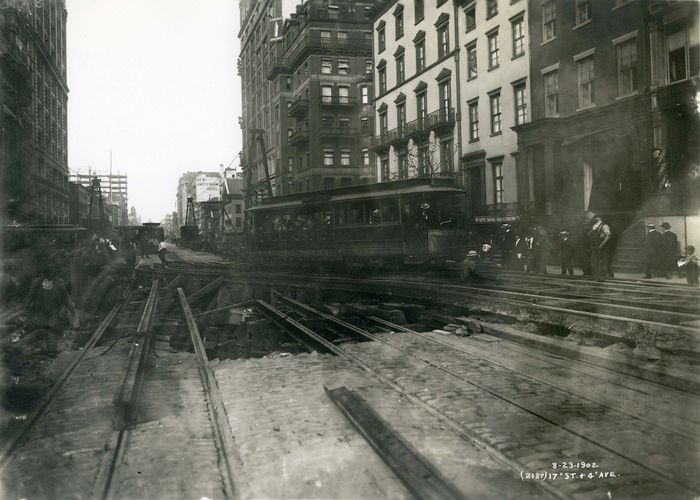
17th Street and 4th Avenue, Manhattan, 1902. Photograph by Pierre P. Pullis. New York Transit Museum. Subway Construction Photograph Collection.
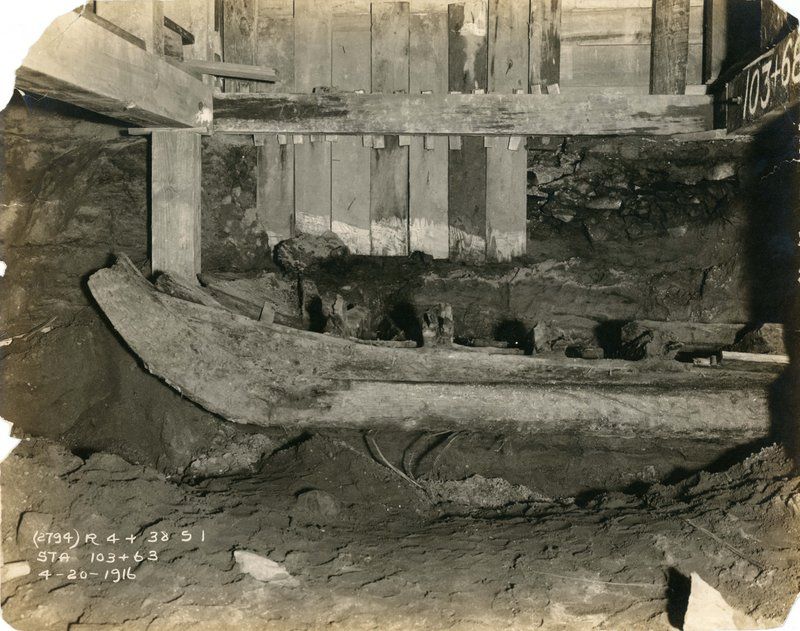 Excavated boat in Manhattan. Photograph by Granville W. Pullis. Eugene Casey Tunneling Collection. Courtesy of the New York Transit Museum
Excavated boat in Manhattan. Photograph by Granville W. Pullis. Eugene Casey Tunneling Collection. Courtesy of the New York Transit Museum
In addition to documenting subway construction, the photographs also reveal many aspects of daily life over a hundred years ago. Some photographs depicts children playing in the streets, merchants selling their goods, and well-dressed people on their way to work.
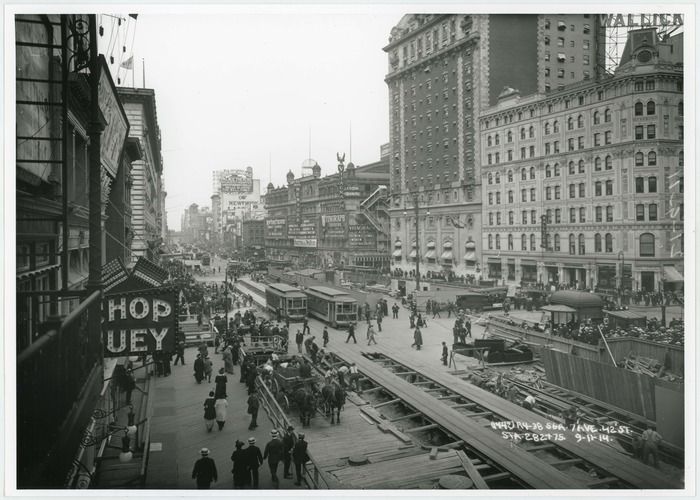
7th Avenue and 42nd Street, Manhattan, 1914. Photograph by Granville W. Pullis. Lundin Collection. Courtesy of the New York Transit Museum
Check out the New York Transit Museum’s newest exhibit and other exhibits currently up like Reign of the Redbirds.
Next, check out the last train of R-42 subway cars as it made its final trip this week, ending more than 50 years of service in New York City. And read about the Oldest Item Inside the New York Transit Museum!
Subscribe to our newsletter